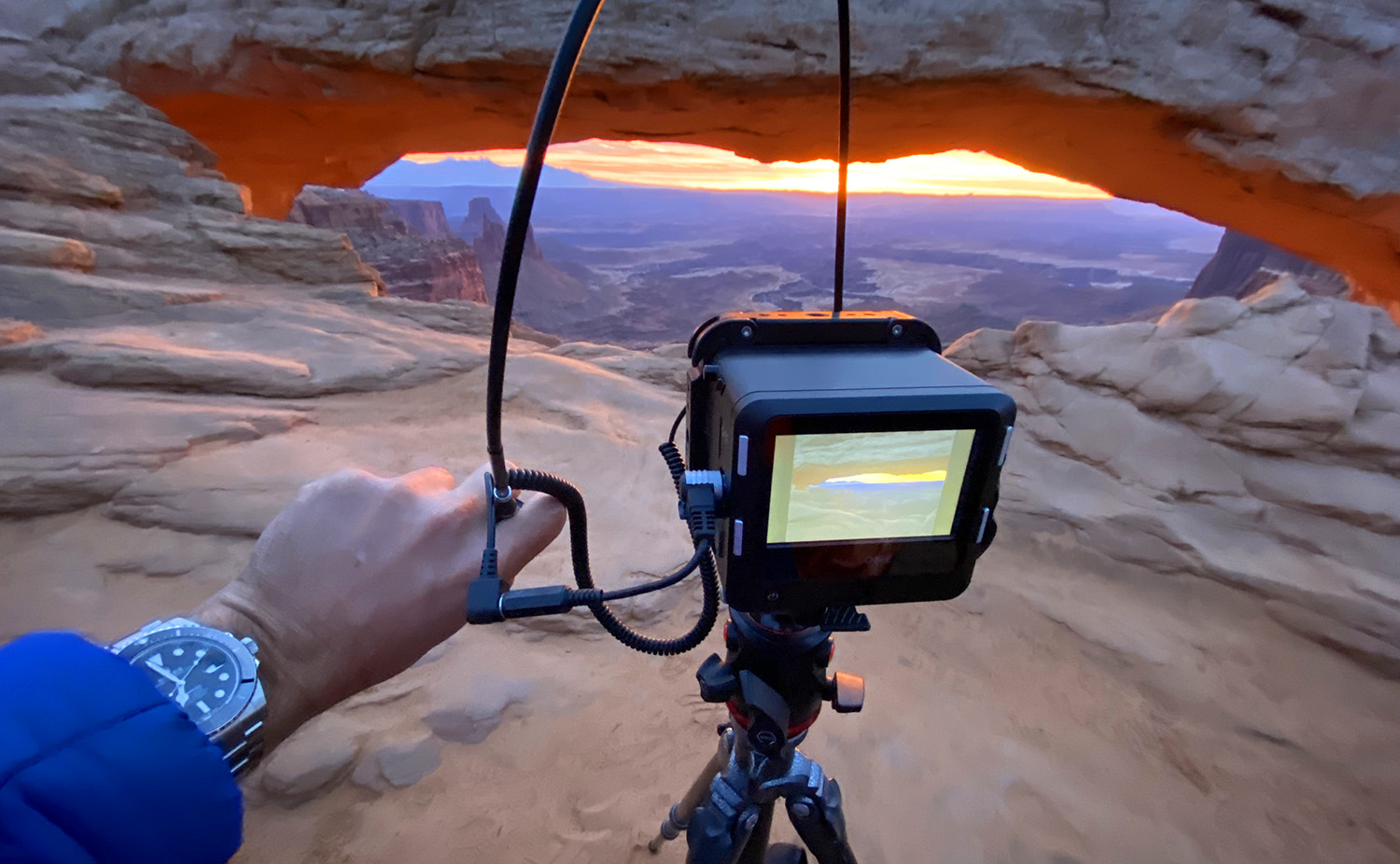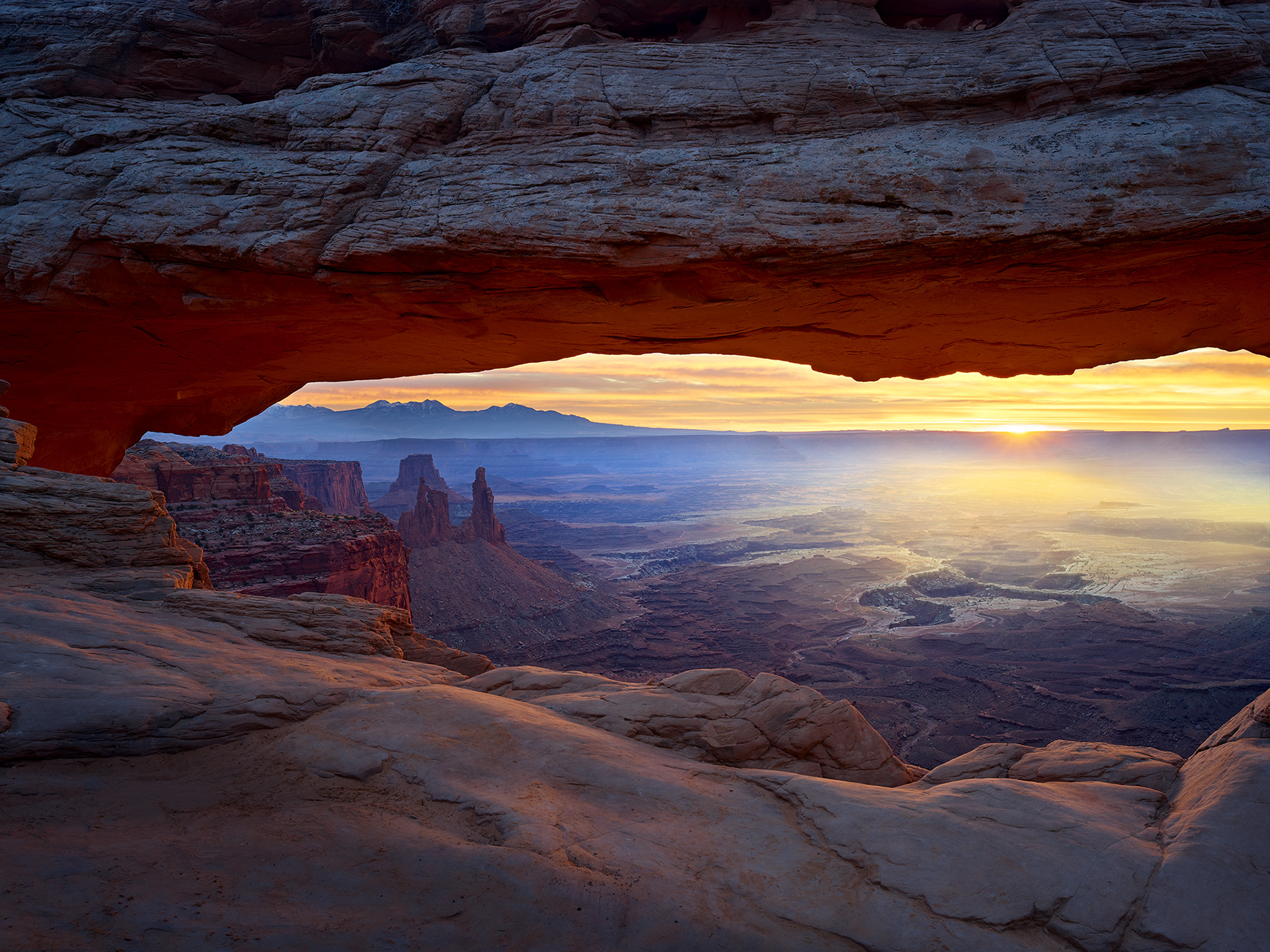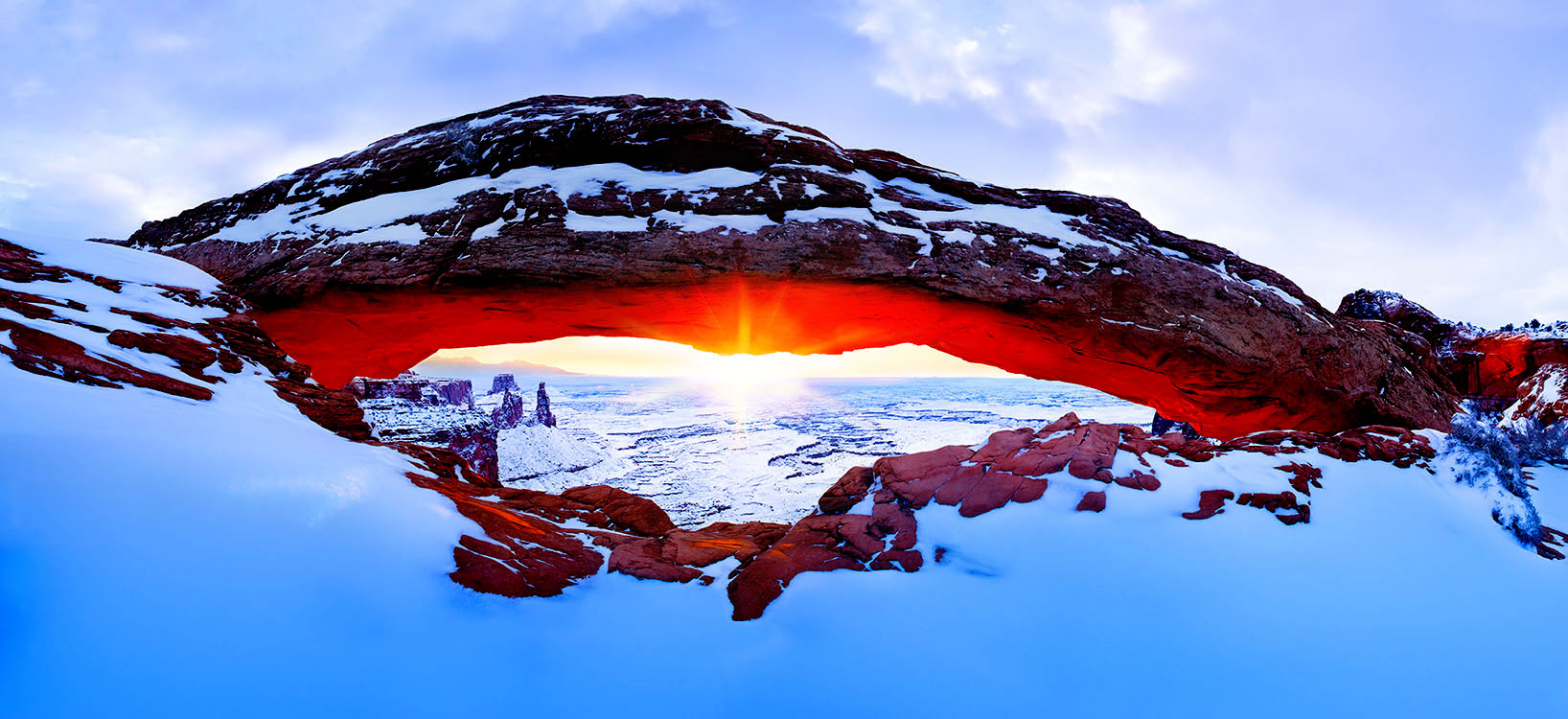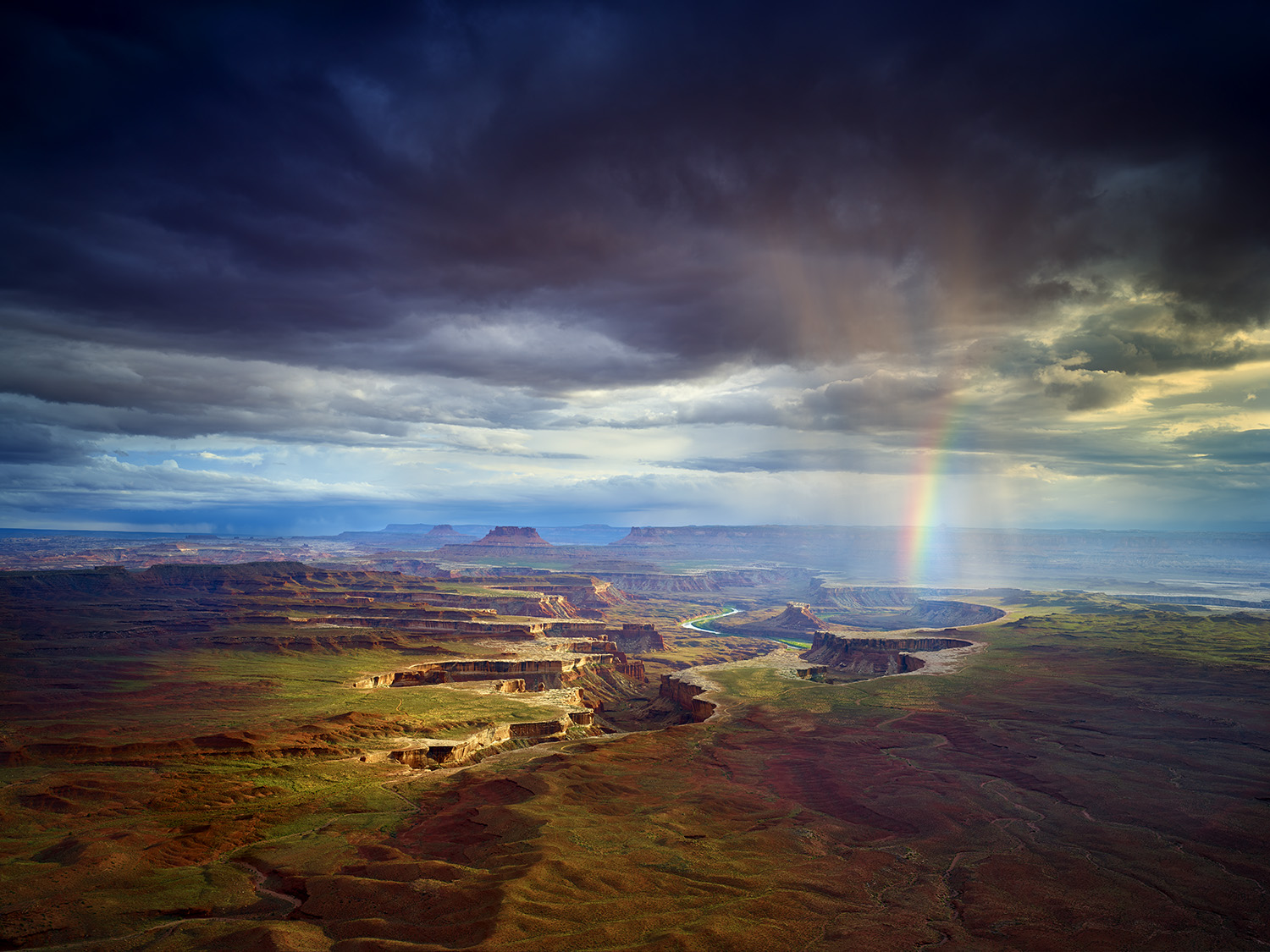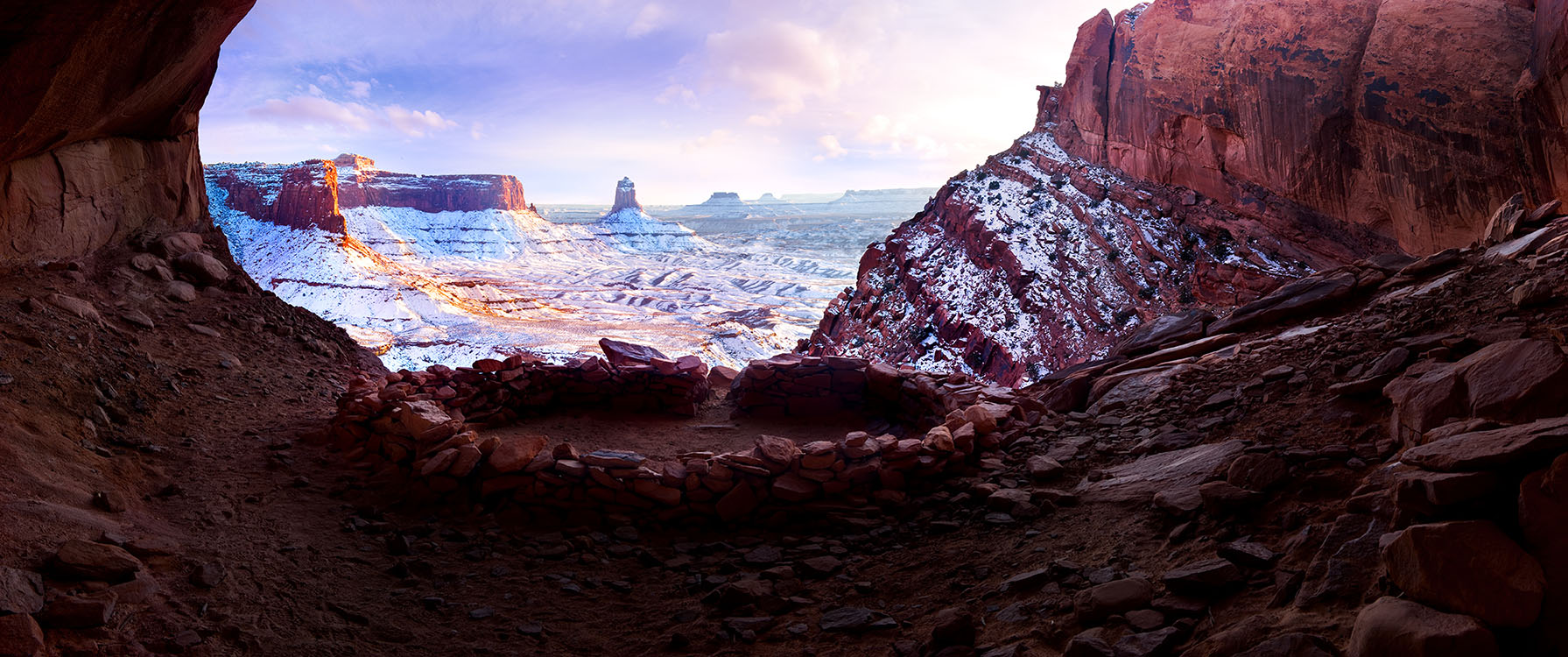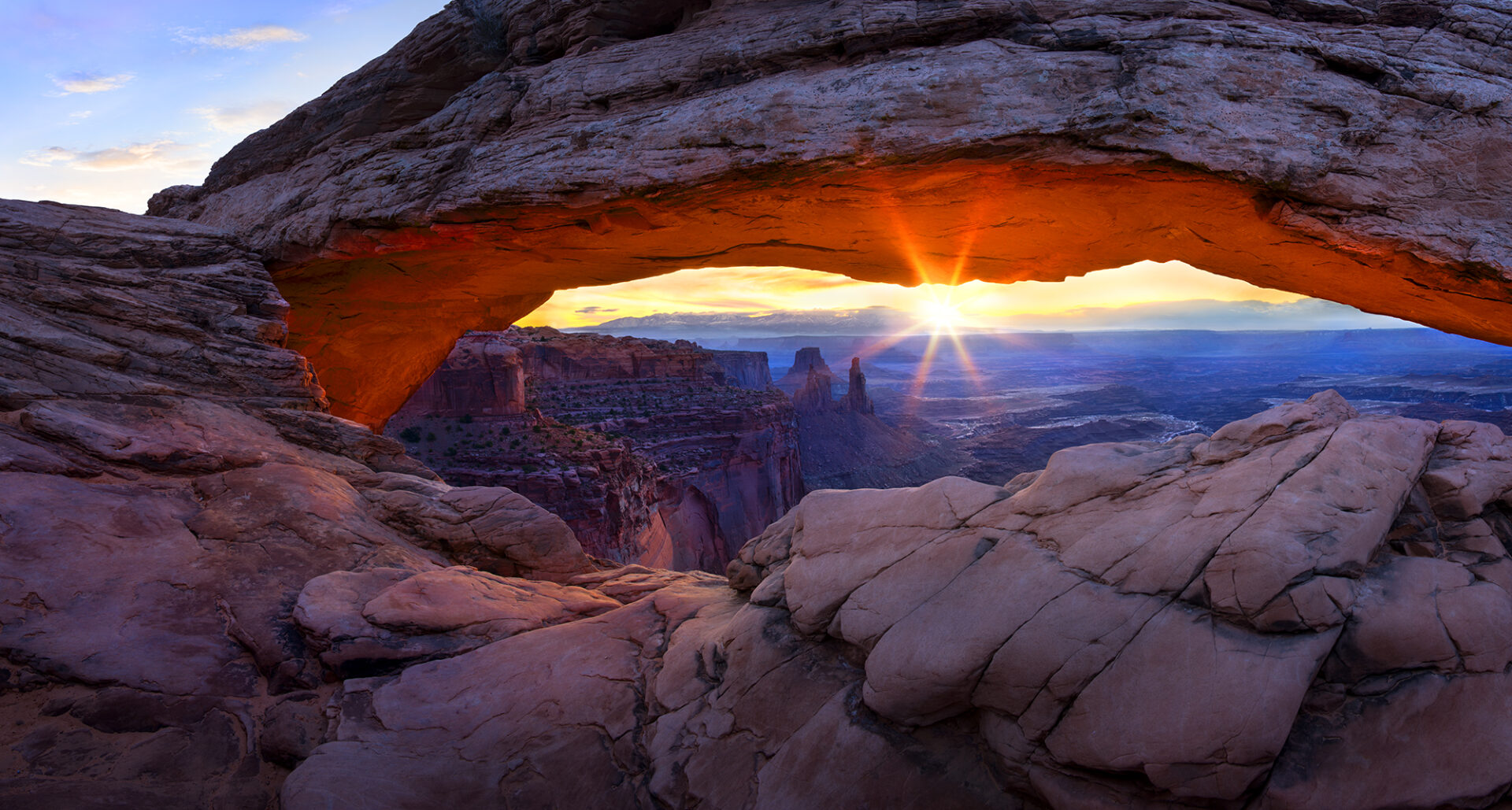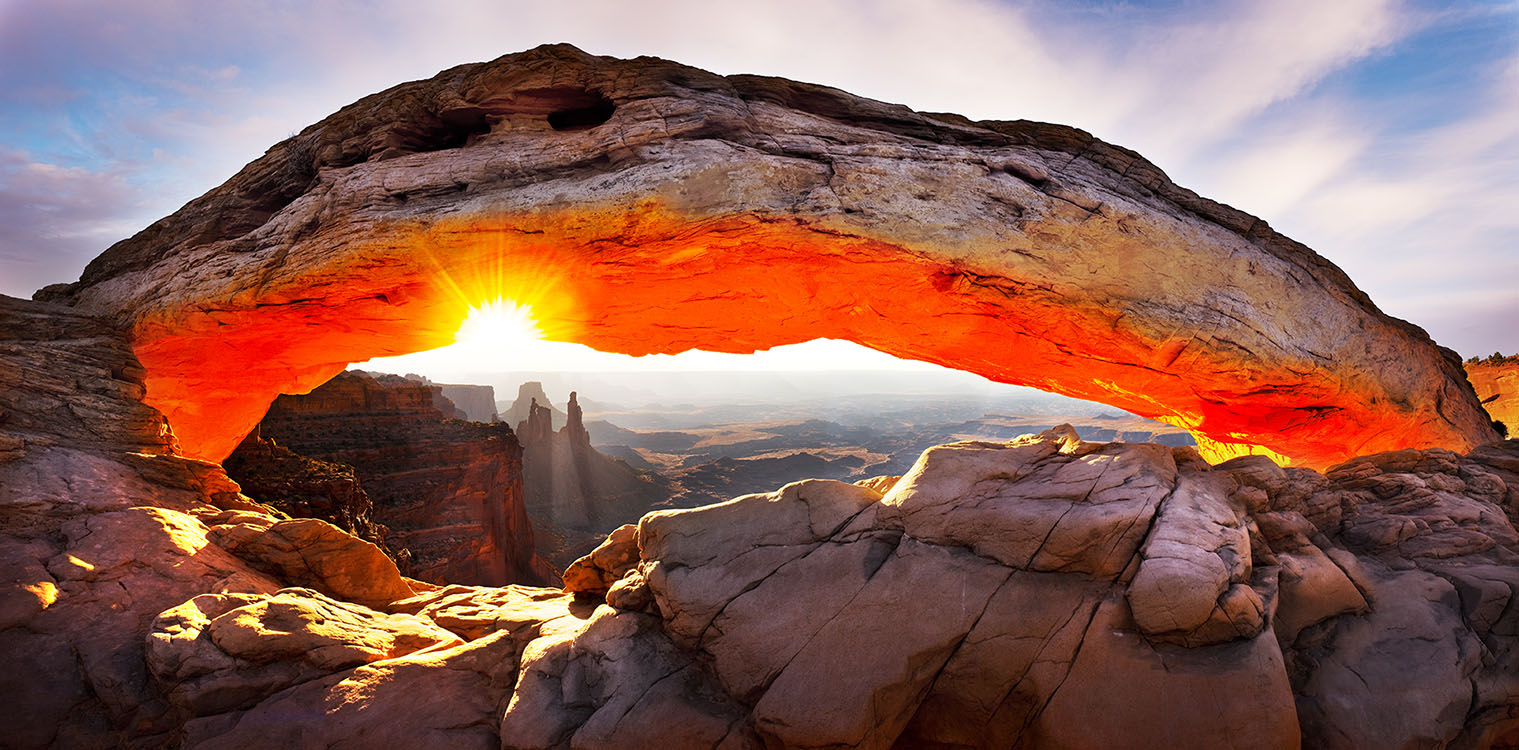Some national parks whisper their wonders. Others shout. Canyonlands doesn’t do either—it echoes, across vast mesas, down red rock canyons, and through the kind of silence that makes you pause. This place is wild. It’s raw. And it’s massive.
Sprawling across southeastern Utah, Canyonlands is a land of extremes—deep gashes in the Earth, jagged cliffs, labyrinthine washes, and towering stone spires. It’s a place where time, wind, water, and gravity have worked together to carve out one of the most surreal and untamed landscapes in North America.
I’ve returned to Canyonlands again and again with my camera, drawn not only to its scale but to its solitude. It’s a landscape that asks you to slow down. To listen. And to let the immensity of the world do what it does best: make you feel small—in the best possible way.
–
A Brief History of Canyonlands
The lands that now make up Canyonlands have been inhabited for thousands of years. Ancestral Puebloans, Fremont peoples, and later the Ute and Navajo left their mark here in the form of petroglyphs, cliff dwellings, and ancient trails. You can feel that history in the stillness, etched into the canyon walls.
European-American explorers didn’t venture into the region until the 1800s, but even then, the area remained remote and largely uncharted. In the mid-20th century, as more people began to appreciate the stark beauty of the American Southwest, efforts grew to preserve this extraordinary place. In 1964, President Lyndon B. Johnson officially designated Canyonlands National Park, protecting over 300,000 acres of wilderness.
What Makes Canyonlands So Special?
Canyonlands isn’t one single canyon—it’s a collection of deeply eroded landscapes split into four districts, each offering a different experience, mood, and photographic opportunity.
1. Island in the Sky
The most accessible and arguably the most dramatic district, Island in the Sky sits on a massive mesa 1,000 feet above the surrounding terrain. The views here are sweeping, godlike, and impossible to capture in a single frame. This is where you’ll find Mesa Arch, Green River Overlook, and Grand View Point.
2. The Needles
This region features towering red and white sandstone spires, ancient ruins, and some of the best backcountry hiking in the park. It’s more remote, more rugged, and less traveled—a landscape shaped by both time and silence.
3. The Maze
Remote, difficult to access, and wild in every sense. If you’re looking for true solitude, this is it. The Maze is where serious backcountry adventurers go when they want to disappear into the land.
4. The Rivers
The Colorado and Green Rivers snake through Canyonlands, carving deep canyons and creating oases of life in an otherwise dry and rocky world. River trips here are legendary, offering a completely different perspective of the park’s grandeur.
Mesa Arch: Sunrise at the Edge of Forever
There are places you visit that are beautiful. And then there are places you experience that become etched into your memory forever. Mesa Arch at sunrise is one of the latter.
Perched on the edge of a cliff in the Island in the Sky district, Mesa Arch is a relatively short, easy hike—but the reward is utterly overwhelming. As dawn approaches, photographers line up in the darkness, tripods ready, knowing that the light show about to unfold is unlike anything else on Earth.
Then it happens. The sun crests the horizon and pours through the arch like liquid fire. The underside of the arch glows orange, illuminated by the reflected light from the canyon walls below. The vast chasm beyond—dotted with rock spires, buttes, and the distant La Sal Mountains—begins to reveal itself in layers of red, orange, and purple.
It only lasts a few minutes, but it’s a few minutes you never forget.
As a photographer, it’s almost overwhelming. You want to capture the light, the moment, the emotion. But more than that, you want to feel it. To just be there, surrounded by the quiet awe of everyone watching the Earth wake up.
There’s no other place I’ve been where sunrise feels so perfectly orchestrated by nature. If you only do one thing in Canyonlands—make it this.
Canyonlands Through the Seasons
Canyonlands is a park of extremes, and its mood changes dramatically with the seasons.
Spring (March–May)
Spring brings relief from winter’s chill and offers comfortable days with crisp, cool mornings. Wildflowers bloom in the Needles, and the sky often stays clear and photogenic.
Photographer’s Tip: Sunrise at Mesa Arch or sunset at Green River Overlook are musts. Try to visit in April for ideal light and temperature.
Summer (June–August)
Summer can be punishingly hot, especially in the lower elevations, with daytime highs often over 100°F. But the dramatic monsoon storms of July and August can create jaw-dropping skies and light.
Photographer’s Tip: Shoot early and late to avoid the heat. Afternoon thunderstorms often produce dramatic cloud formations and lightning—just be careful and check forecasts.
Fall (September–November)
Fall brings golden light, cooler temperatures, and fewer crowds. It’s my favorite season to photograph the wider vistas without heat haze or intense midday glare.
Photographer’s Tip: The clarity in the air this time of year makes for crystal-sharp detail in your long-lens canyon shots.
Winter (December–February)
Snow is rare but magical when it falls, dusting the red rock with white. The park is virtually empty, and the low-angle light creates long, dramatic shadows all day long.
Photographer’s Tip: If you’re lucky enough to catch snowfall, head to Grand View Point or Upheaval Dome. The contrast is stunning.
Managing the Crowds
Canyonlands is still one of the quietest national parks in the Southwest—especially compared to Arches or Zion. Even in peak season, you can find solitude just minutes from the main roads.
-
Go early: Especially for sunrise at Mesa Arch.
-
Hike a little: Even a short walk down lesser-known trails like White Rim Overlook or Murphy Point will leave the crowds behind.
-
Visit Needles or Maze: These districts are much less traveled but incredibly rewarding.
–
Why I Keep Coming Back
Canyonlands speaks to the soul of adventure photography. It’s not polished. It’s not easy. It’s vast, complex, and sometimes harsh. But that’s exactly what makes it special.
It’s a place where light dances across millennia-old cliffs, where silence stretches wider than the horizon, and where your compositions feel like they’ve been waiting millions of years just for the right moment.
For me, returning to Canyonlands is like re-reading a favorite book—but this time with different weather, different light, a different version of myself behind the camera. No two visits are the same. And that’s the magic of it.
–
Final Thoughts
Canyonlands National Park isn’t just a destination—it’s a conversation with the land. A slow, powerful, elemental exchange between time, geology, weather, and light. It invites patience, rewards stillness, and continually offers something new for those willing to listen.
If you’ve never seen the sun rise through Mesa Arch, let it move to the top of your list. If you’ve only visited Island in the Sky, go deeper. Hike in the Needles. Stand at the edge of the Maze. Let the silence teach you.
I’ll be back again soon—with my boots dusty, my camera ready, and my heart wide open.
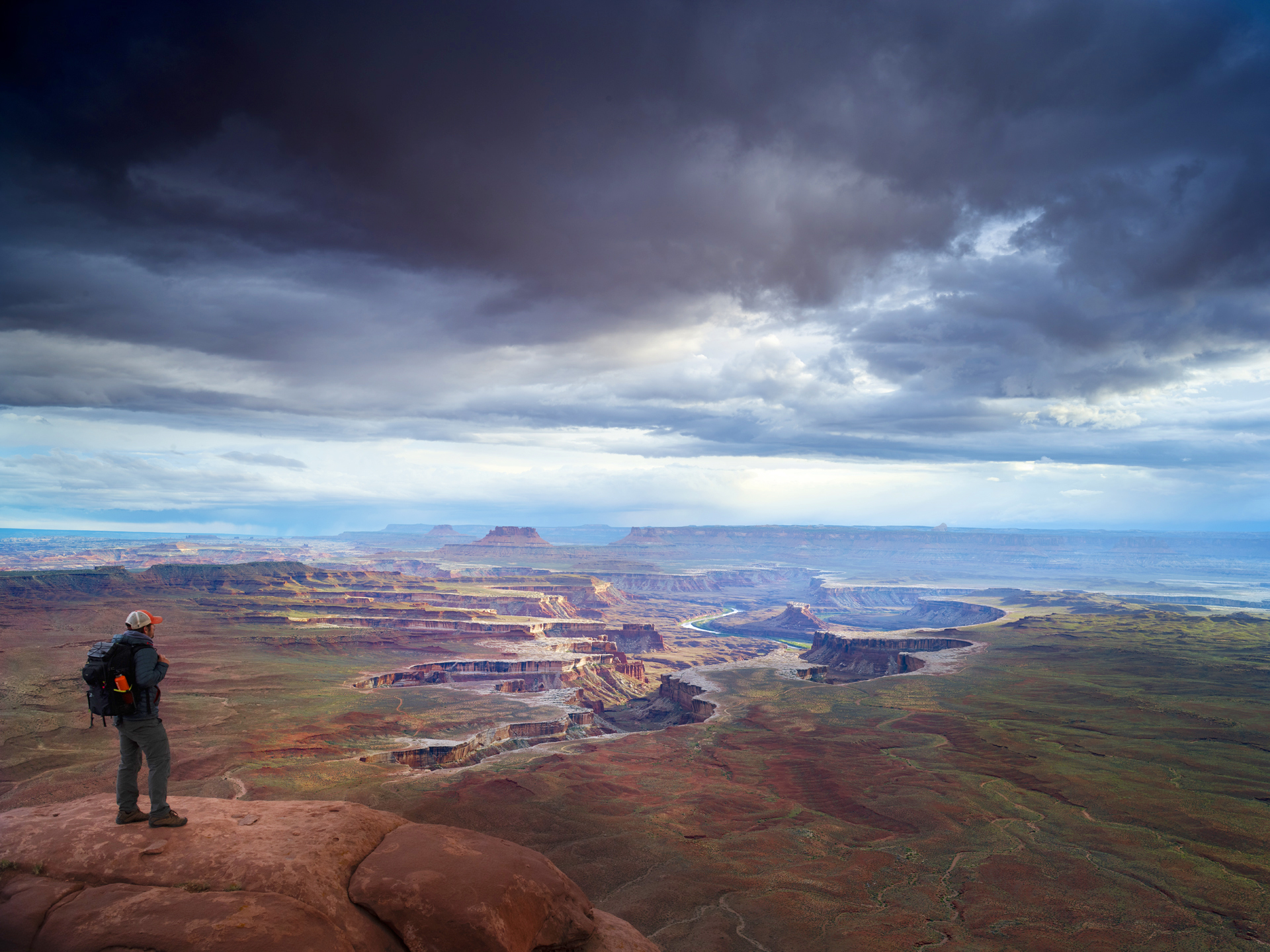
Newspaper Rock
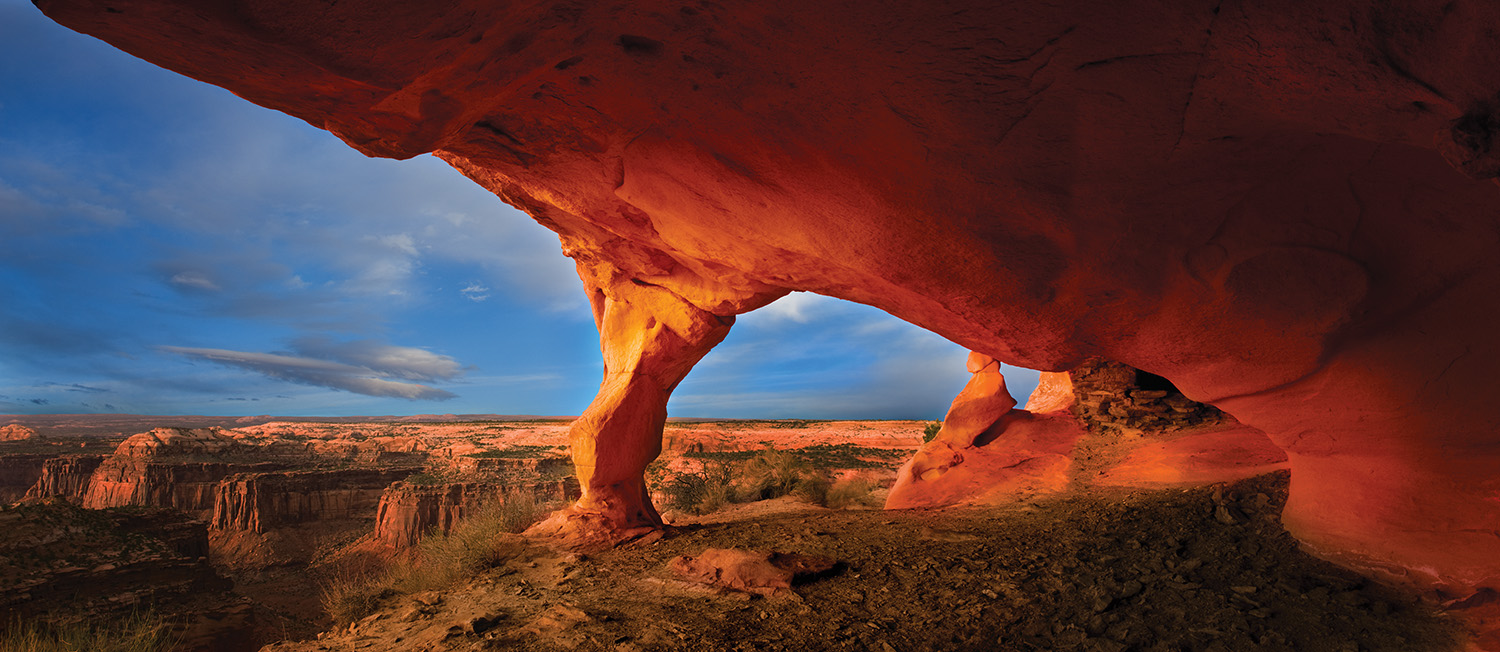
Native American hieroglyphics
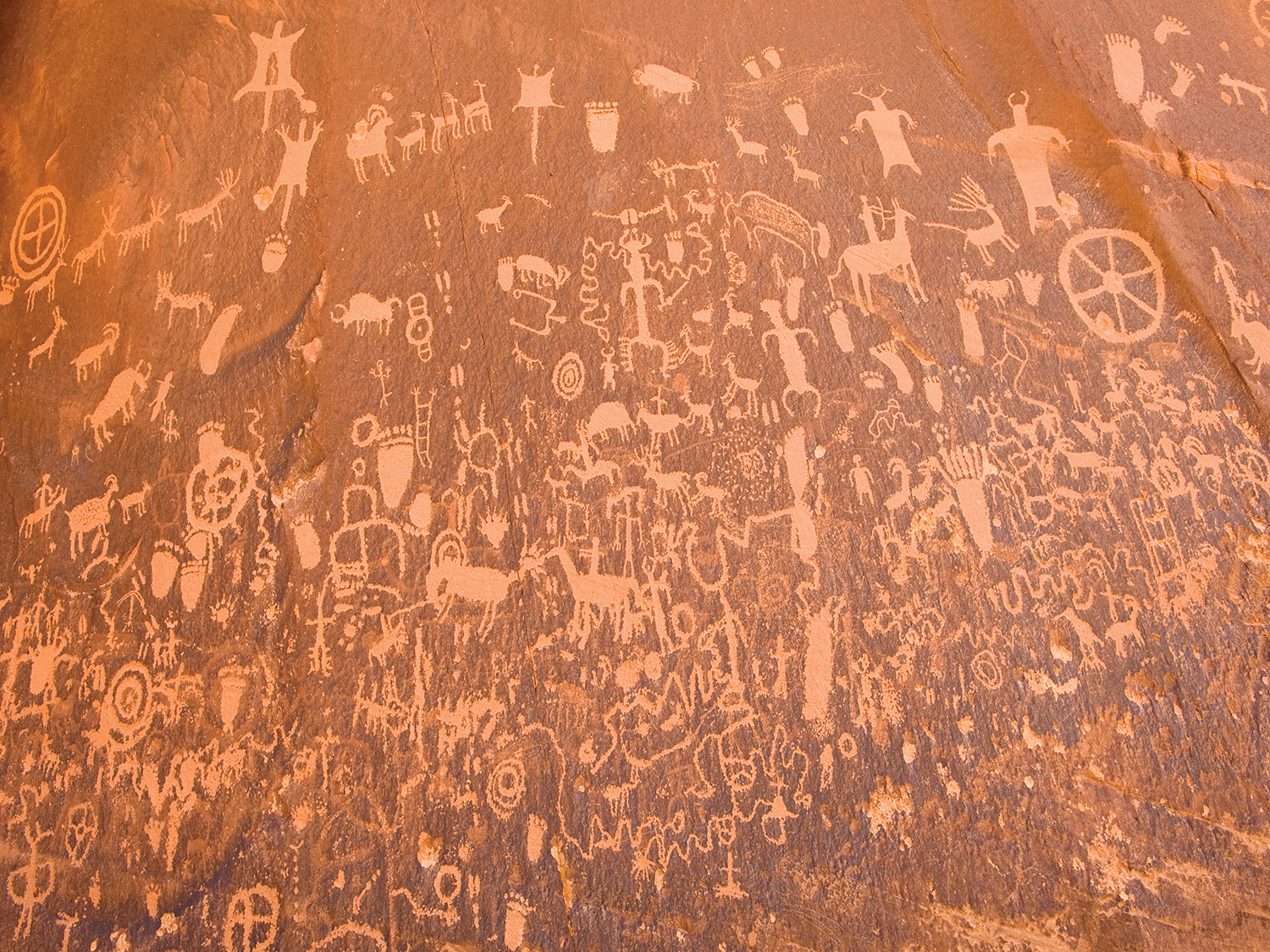
Native American hut

Photographing Mesa Arch
